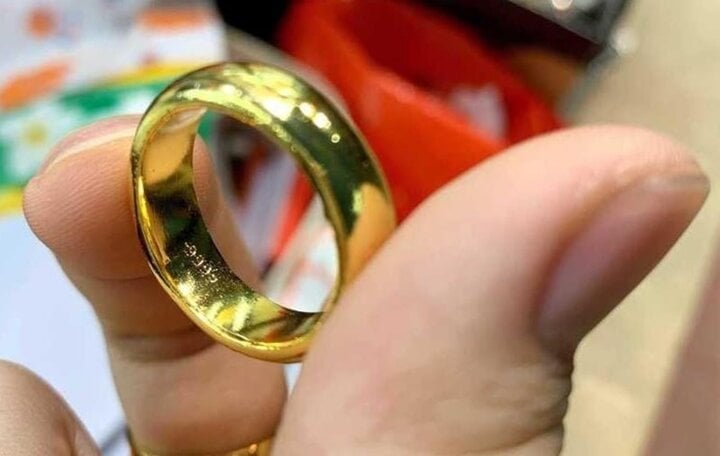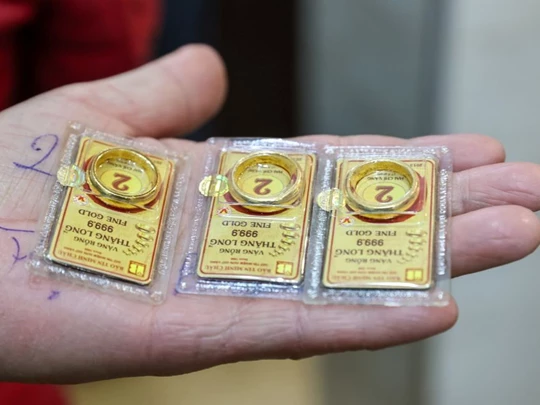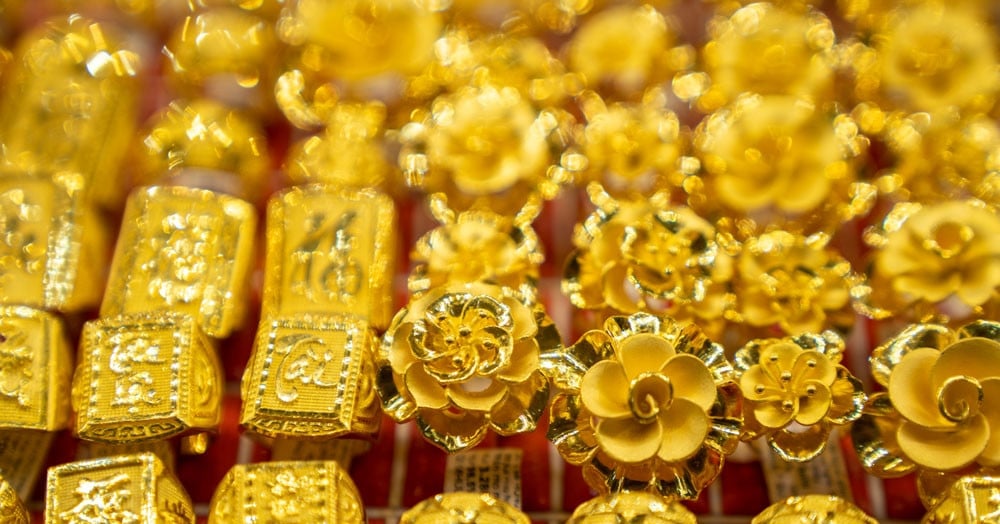What is pure gold?
Pure gold is also known as 99.99% gold and 0.01% impurities. Because the gold content is 99.99%, pure gold is also called 9999 gold.
Pure gold has a bright yellow color and exists in two forms: block and powder. Pure gold has good thermal and electrical conductivity. Pure gold is not affected by environmental factors such as air, chemicals, oxidation, etc.
Because of its softness and ductility, gold is often combined with alloys to harden it when processed.
Types of gold
On the market, there are 4 types of gold: 10K gold, 14K gold, 18K gold and 24K gold.

(Illustration)
10K gold : This type of gold has a low pure gold content, only 41% (ie 4 years old), the rest is mixed with other metals and alloys. After a period of use, 10K gold jewelry will tarnish because some of the metals inside are affected by oxidation.
14K Gold : This type of gold has a pure gold content of 58% (ie 6 years old). 14K gold is not as bright and beautiful as those with high gold content.
18K Gold : This type of gold contains up to 75% gold. The rest is mixed with other metals such as silver, aluminum...
24K gold: also known as pure gold, is the type that contains up to 99.99% gold. 24K gold is not commonly used in jewelry like other types. Instead, 24K gold will be cast into gold bars and gold ingots for buyers to store.
Things to note when buying gold
Tracking gold price fluctuations: One of the important factors to help make the right decision when buying gold is to track price fluctuations. Gold prices are always fluctuating, so carefully studying the prices helps customers consider reasonable opportunities, bringing high-profit investment capital.
Choose a reputable brand: To reduce risks when buying gold, customers should choose a reputable brand with a clear sign and tax code...
Note the factors affecting gold prices: Factors affecting gold prices include the USD, inflation, gold ETFs, oil prices, economic and social factors, war...
Lagerstroemia (synthesis)
Source



![[Photo] General Secretary To Lam receives President of the Republic of Burundi Évariste Ndayishimiye](https://vstatic.vietnam.vn/vietnam/resource/IMAGE/2025/4/4/d6df4662ecde41ef9bf55f1648343454)
![[Photo] Parade rehearsal on the training ground in preparation for the April 30 celebration in Ho Chi Minh City](https://vstatic.vietnam.vn/vietnam/resource/IMAGE/2025/4/4/e5645ddf85f647e6a25164d11de71592)
![[Photo] Prime Minister Pham Minh Chinh meets with President of the Republic of Burundi Evariste Ndayishimiye](https://vstatic.vietnam.vn/vietnam/resource/IMAGE/2025/4/4/979010f4c7634f6a82b8e01821170586)
![[Photo] Workshop "Future for the Rising Generation" continues the profound value and strong message from the article of General Secretary To Lam](https://vstatic.vietnam.vn/vietnam/resource/IMAGE/2025/4/4/ec974c5d9e8e44f2b01384038e183115)
![[Photo] President Luong Cuong presides over the official welcoming ceremony for Burundian President Évariste Ndayishimiye](https://vstatic.vietnam.vn/vietnam/resource/IMAGE/2025/4/4/63ceadc486ff4138abe2e88e93c81c91)


























































































Comment (0)